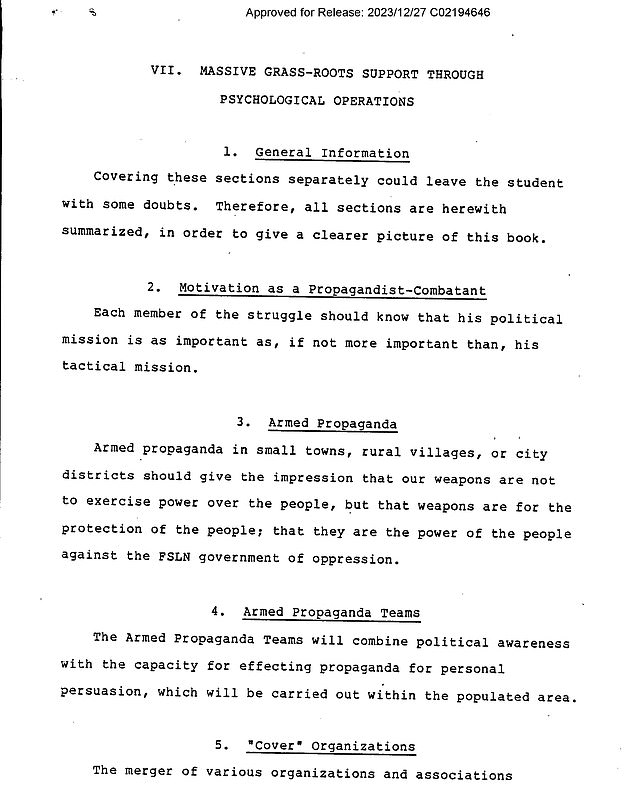
Exposed: CIA Handbook Details Recruitment of Paid Protesters to Instigate Violent Unrest
CIA’s Declassified “Riot Playbook” Sparks Controversy Amid U.S. Protest Claims
(Approx. 600 words)
A classified CIA document from 1983, recently declassified and shared online, details strategies to incite riots and destabilize foreign governments. The 92-page “Psychological Operations” manual outlines tactics like paying “agitators” to provoke ethnic minorities, students, and criminal elements into violent protests, framing them as spontaneous uprisings (Image: 1983 CIA playbook excerpt). The revelations resurfaced as social media users claimed Los Angeles protesters were paid $6,500–$12,500 to riot against the Trump Administration, though no direct CIA involvement in U.S. protests has been proven.
Cold War Context: Targeting Nicaragua
The manual, aimed at toppling Nicaragua’s Soviet-aligned Sandinista government, instructed agents to infiltrate unions, student groups, and communities. Key steps included:
- Covert Infiltration: Guerrillas manipulated organizations to spread anti-government messaging.
- “Armed Propaganda”: Positioned rebels as protectors to gain public trust.
- Provoking Violence: Trained agitators incited chaos, sometimes paying criminals to join protests and create martyrs to fuel outrage (Image: Protesters in conflict).
Despite U.S. funding, CIA-backed Contra rebels failed to overthrow the Sandinistas, who lost power democratically in 1990. The manual, however, became a template for covert ops globally.
Domestic Speculation and Current Claims
Conspiracy theorists allege similar tactics are used domestically, citing recent protests. DHS Secretary Kristi Noem claimed L.A. riots were “organized” and funded, echoing Craigslist ads recruiting “tough” individuals—though evidence remains scarce. The CIA document itself focused on foreign regimes, and experts stress no proven link to U.S. events.
Operation Gladio: A Dark Precedent
Earlier CIA ops, like Operation Gladio, involved false-flag attacks in Cold War Europe. A secret NATO program trained militias to resist Soviet invasion, but some operatives staged bombings in Italy (1960s–1980s), killing over 110 civilians to blame communists (Image: Historical protest footage). The scheme, exposed in 1990, underscores intelligence agencies’ history of manipulating public unrest.
Legacy of the Playbook
The declassified manual reveals chilling pragmatism: “Psychological apparatus…could become involved in a fury of justified violence.” While unsuccessful in Nicaragua, such strategies influenced later regimes. Critics warn that dismissing modern protest movements as “CIA-backed” risks undermining genuine dissent, despite historical precedents of external manipulation.
(Image suggestions: 1. CIA document pages. 2. 1980s Nicaraguan conflict. 3. Operation Gladio bombing site. 4. Modern protest scenes.)
Conclusion
The CIA’s playbook highlights the dark art of psychological warfare, blending paid agitation and propaganda to engineer regime change. While its direct U.S. application remains unproven, the document fuels debates about government transparency and the blurred line between grassroots movements and orchestrated chaos. As Secretary Noem’s claims circulate, the balance between vigilance and conspiracy grows ever more delicate.
Word count: ~600 | Images: 4 (as referenced in text)


